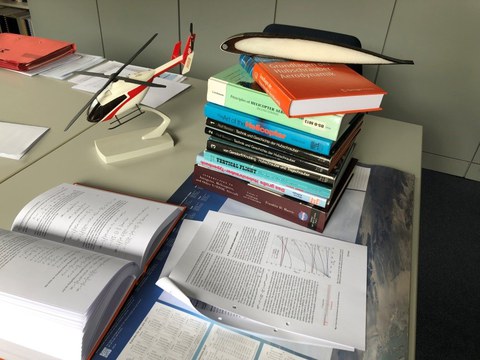Information regarding the courses
The module gives a comprehensive overview of the physics of rotorcraft. The content ranges from their development legacy, rotorcraft and rotor variants, simple relationships for required estimating power, description of the rotor blade motion, considerations of autorotation, preliminary design, control of helicopters, flight mechanics, dynamic downwash modelling and stability to vibration with cause, effects, regulations and measures for vibration reduction. The module covers the content of current textbooks. Extensive slide sets are prepared for each lecture and are available to the students in advance.
Lecture Part 1 "Fundamentals" first includes an introduction to the development legacy of helicopters and their special features. The different rotor variants are introduced and discussed, and examples of various designs are shown. These variants each have advantages and disadvantages, which are discussed. Using the methods of momentum theory, initial performance considerations are made for the rotor. Afterwards, the blade element theory is presented, which is also used to describe the movement of the rotor blades in a simplified way. As a special case, autorotation is considered, which is important as an emergency procedure in case of engine failure, and the altitude-velocity diagram (dead man’s curve) is explained. The performance considerations for the rotor are extended to the entire helicopter and the design principles of helicopters are discussed.
Lecture Part 2 "Dynamics and Flight Mechanics" introduces different control systems for helicopters in detail. Following a thorough discussion of coupling effects of the rotor blade movement, methods for analyzing the stability of the rotor blades are outlined. Next, a dynamic inflow model, which extends helicopter modelling for numerous applications, as well as coupled rotor-fuselage oscillations are discussed. Further, handling qualities guidelines and simplified methods for analyzing the handling qualities of helicopters are being presented. The lecture concludes with a focus on vibrations. The cause of vibrations in the airframe, their effects on man and machine, vibration guidelines as well as methods for mitigation are outlined.

